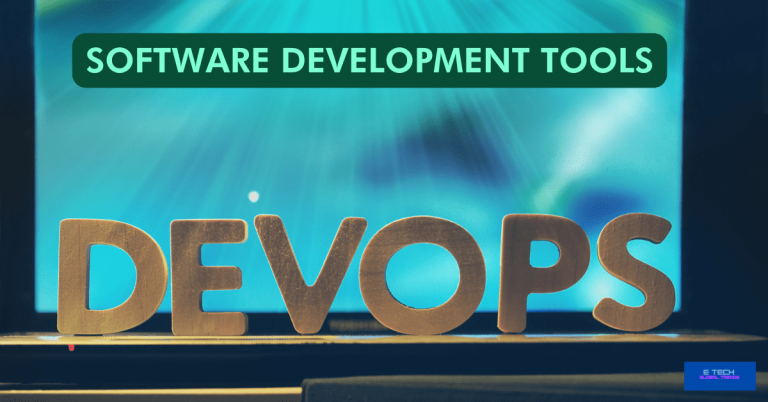Data Augmentation
What is the purpose here? By creating fresh points of information from the existing data. This data analysis technique somewhat increases the amount of data. So what? Is it crucial? Yes, of course, then, It is possible to artificially increase the amount of data in current datasets using the method of “data augmentation”.
while obtaining new data isn’t always an option. one might create fresh data from current data by utilizing a variety of transformations.
Well, this might not be clear. True! That’s why today we are going to discuss it with you. Hopefully, this will help.
If so, keep tuned until the end.
In this manner, first, we‘ll clarify the basics of this data analysis technology. especially, If you are a newbie. No matter, we try to take you on a safe ride.
Let’s get started.
What does data augmentation mean?
Data augmentation is the practice of expanding a dataset’s size and adding variation without actually gathering new data. In any event, these images are treated separately by the network. Furthermore,
Data augmentation helps to lessen over-fitting. Despite the fact that our dataset only includes images taken in a limited number of contexts, there may be other situations that we are overlooking. It also helps in handling such circumstances.
Therefore, we must make minor adjustments to our current training data in order to collect additional data. Image Data Augmentation includes various adjustments such as flipping an image horizontally or vertically, rotating, padding, cropping, and scaling.
Why is data analysis important?
When we analyze data, we look for patterns and trends. in the information from multiple sources that can guide our decision-making. Numerous disciplines, including business, research, and engineering, use data analysis.
How does data augmentation work?
There are 2 major areas that use this technology.
- ML (Machine learning) algorithms for NLP( natural language processing)
- Image categorization
is increasingly using this method.
ML systems need a sizable dataset with a variety of photos for image classification. The lack of sufficient datasets. However, it might result in “data overfitting” in a number of situations.
We’ll describe what is “data overfitting” later. And skip for now.
A dataset can use to generate more photos by;
- Blurring,
- Rotating, and
- Padding
images via data augmentation. so the purpose is,
By employing their trials, Data Augmentation is able to multiply the dataset size by a factor of 2048. and accomplishes by randomly selecting 224 224 patches from the source photos. flipping them horizontally, then altering the RGB channel intensities using PCA color augmentation.
Alternative AI Training Datasets
The cost of developing AI models is rising, partly as a result of the high cost of acquiring reliable information.
The expense of collecting real-world AI datasets frequently outweighs smaller organizations’ entire computing expenditures. especially for entrepreneurs and other smaller businesses.
In order to create the datasets needed to train AI models, we now need to find alternate methods.
One current method used to produce less expensive datasets is the use of synthetic data.
In fact, according to a Gartner prediction, artificial intelligence model training would increasingly rely on synthetic data by the year 2030.
What is overfitting data?
Data overfitting is an inaccuracy in statistics brought on by small datasets. When a model performs well on training data but not well on test data. This means overfitting.
How can we avoid this?
how to cut down on overfitting.
There are few solutions available to reduce Overfitting.
1.0 Increase your data
Adding more data to your training will almost always be beneficial.
2.0 Data augmentation
While obtaining new data isn’t always an option, one might create new data from current data by utilizing a variety of transformations.
This is our today’s main concern today.
3.0 Reduce Model Complexity
A model that is overly complicated will often overfit since it will learn patterns that are not intended to learn.
What effective data augmentation methods are there for small image data sets?
It’s important and difficult to augment limited datasets. meanwhile, you are not really providing much new data to the network, you are training it not to overfit your dataset in terms of the type of augmentation by augmenting the data.
When doing an image classification job. Likewise, such as binary classification of dogs and cats), rotating the image at different angles teaches the network to be rotation-invariant.
(Similarly, for scale augmentation, obstacle simulations, and random noise)
Therefore, even while fresh “authentic” information without adding to the network, the addition of “synthetic” data augmentation to the network can both enhance the results obtained from the network and enable training with fewer data.
It’s vital to remember that augmentation only serves a purpose when it is semantically sound. Since it is extremely rare that people would cross the street with their feet up and their heads down in real life, there is no reason to alter photographs of people doing so. This could potentially harm your results.
How to do Regularization?
Regularization controls the complexity of the model by penalizing higher terms in the model. If a regularization factor is included, the model seeks to reduce both loss and model complexity.
L1 regularization and L2 regularization are the two most popular regularization techniques.
The weights of characteristics that are not informative must be zero due to L1 regularization. At each iteration, L1 regularization operates as a force that slightly reduces the weight, bringing it to zero.
L2 regularization powers weight toward 0 but it does not end up making them exactly zero. At each iteration, L2 regularization subtracts a small portion of the weights.
What is data augmentation in NLP?
A group of algorithms known as “data augmentation” put together fake data from a readily available dataset. This simulated data often includes minor changes to the original data that shouldn’t affect the model’s predictions. Additionally, compositions between distant samples that is exceedingly difficult to discern.
Certainly, it can represent using synthetic data. Data augmentation is the most efficient interface for modifying the training of Deep Natural Networks.
Similarly, As algorithms become more sophisticated, they also become more data-hungry in order to better understand the specific meaning of the statement.
As an example
For instance, the variety of words used in the text classification tasks enables a considerably more robust algorithm, especially when using, in production with a sample of real word data.
Words in NLU can be poorly connected with an inaccurate class and can hazard in the event of real-world use, as instances get difficult to differentiate, similar to biases in object recognition where recognizing a seagull is more associated with the appearance of the beach than the bird itself.
Understanding how well alternative data might influence positively this text categorization job requires comparing the effectiveness of several-
Machine learning models on the original data.
- experimental arrangement
- creating a more robust dataset
- Contrarian enhancement
- Using fictitious data, strengthen a model
- Cost/efficiency comparison
- creating fictitious information
- examining the findings
The cost of producing the reviews that are prepared in a counterfactual manner is three times less. In order to achieve greater performance at a lower cost, expanding data by employing counterfactually created data is a wonderful technique to do so. Additionally, because there is no fatigue associated with the activity, the reviews are much easier to generate. The labels were given films to write about for the process of creating movie reviews, but they were not able to write for every picture because they need to have seen it first. Simply comprehending the review is important in the event of the development of counterfactual data.
When producing original data depends on labelers’ creativity, which can quickly run out, this can help in other activities as well.
In deep learning, what is data augmentation?
The practice of “data augmentation” involves adding modified copies of already-existing data or brand-new synthetic data that is generated from existing datasets, hence increasing the amount of data. When training a machine learning model, it acts as a regularization term and helps to lessen overfitting. That has a direct connection to data analysis work oversampling.
The discipline of computer vision sees the largest use of data augmentation. examine which elements should be changed while employing data augmentation.
- Zooming
- Cropping
- Padding
- Re-scaling
- Horizontal and vertical flipping
- Fluctuating in space
- The x, y direction is used to move the image
- Color adjustment, brightness & darkness
- Grays Cycle
- Different contrasts
- Making noise
- Random wiping
How can we perform data augmentation in NLP tasks?
The same way we do for problems involving image machine learning?
For data augmentation in NLP, the following methods come to mind;
- If you have a sentence parsed with part-of-speech tags, we can always utilize a tool like Wordnet synsets to replace the items with tags for other items that are pertinent to the text. Find the adverbs in a sentence, for instance, then substitute them with their alternatives. You should end up with new sentences that are semantically similar.
- Then You can create new sentences at will if you have developed probabilistic context-free grammar. Check here for a sample of how to do this.
- Some exploratory research was there on creative strategies for editing pre-existing sentences from such a training set to produce new ones. These altered sentences appear to be of good quality.
- Building a user simulator that serves as a basic “person” to train and evaluate your model against is quite common in dialogue research, particularly reinforcement learning for dialogue. By creating schemas and rules, it is possible to direct the dialogue simulator to produce pertinent sentences and responses at certain dialogue points. No doubt, the simulator is only as complicated as you decide to make it.
Conclusion
In conclusion, The process of expanding the amount of data utilized to train a model is data augmentation. Deep learning methods frequently need a large amount of training data, that is rarely accessible, in order to make accurate predictions. As a result, new information will add to the existing data to improve the generalized model. So, think about the purpose of data augmentation.
By injecting transformation into the datasets, data augmentation techniques lower operating expenses. Data cleaning is aided by data augmentation, which is necessary for highly accurate models. Machine learning is strengthened by data augmentation by adding variances to the model.
Hope this discussion help.
Read related topics here;datafication trends, data lake house, data fabric for business







